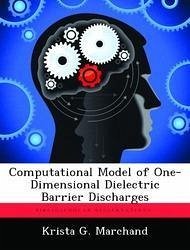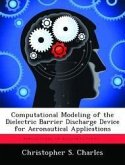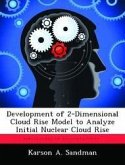A one-dimensional fluid model of a surface-type dielectric barrier discharge is created using He as the background gas. This simple model, which only considers ionizing collisions and recombination in the electropositive gas, creates an important framework for future studies into the origin of experimentally observed flowcontrol effects of the DBD. The two methods employed in this study include the semi-implicit sequential algorithm and the fully implicit simultaneous algorithm. The first involves consecutive solutions to Poisson's, the electron continuity, ion continuity and electron energy equations. This method combines a successive overrelaxation algorithm as a Poisson solver with the Thomas algorithm tridiagonal routine to solve each of the continuity equations. The second algorithm solves an Ax=b system of linearized equations simultaneously and implicitly. The coefficient matrix for the simultaneous method is constructed using a Crank-Nicholson scheme for additional stability combined with the Newton-Raphson approach to address the non-linearity and to solve the system of equations. Various boundary conditions, flux representations and voltage schemes are modeled. Test cases include modeling a transient sheath, ambipolar decay and a radio-frequency discharge. Results are compared to validated computational solutions and/or analytic results when obtainable. Finally, the semi-implicit method is used to model a DBD streamer.
Hinweis: Dieser Artikel kann nur an eine deutsche Lieferadresse ausgeliefert werden.
Hinweis: Dieser Artikel kann nur an eine deutsche Lieferadresse ausgeliefert werden.








